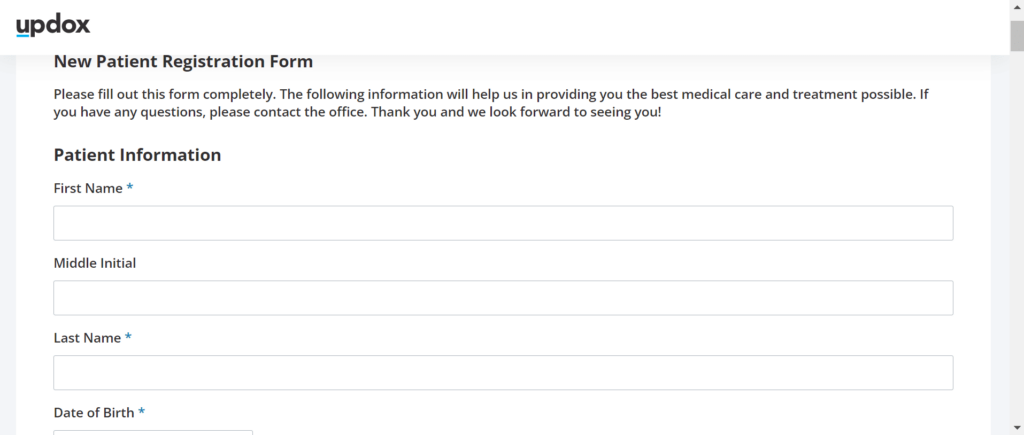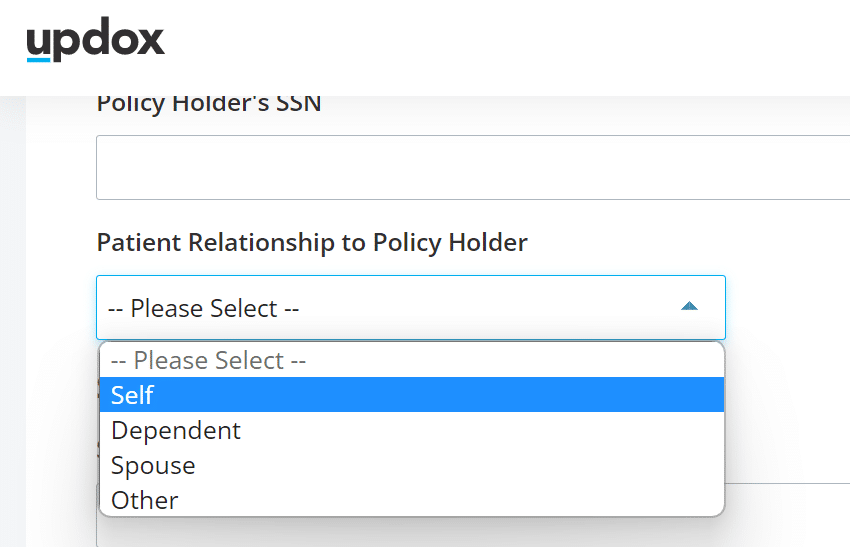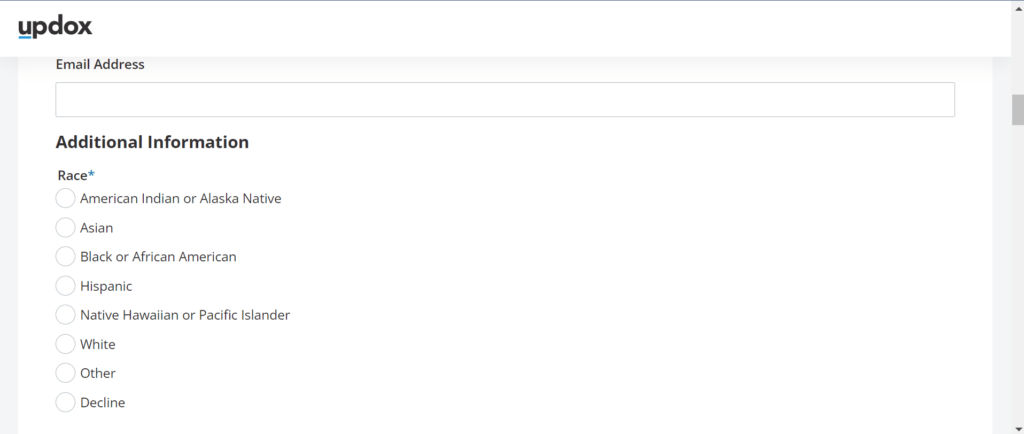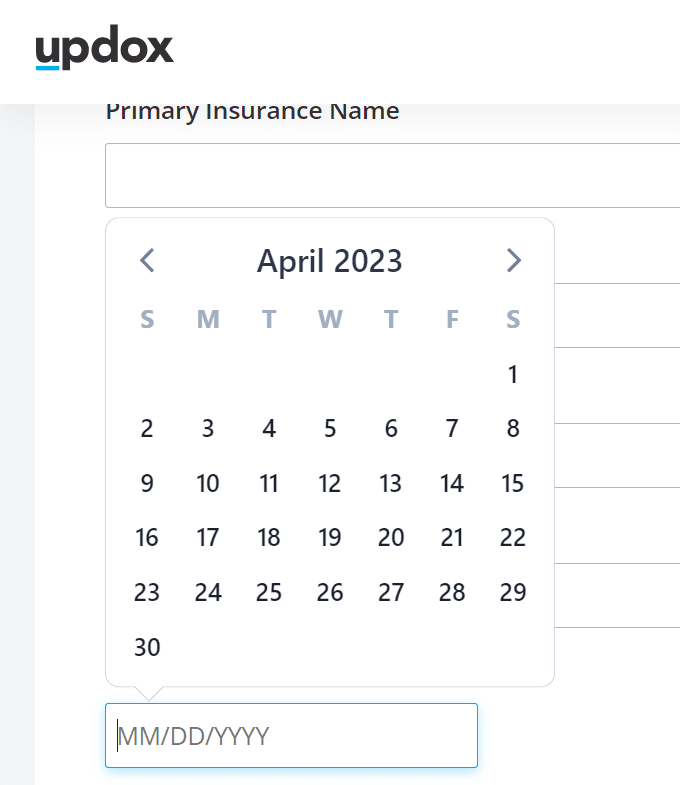Data entry plays a monumental role in the healthcare industry. Patients enter information into forms, office staff transfers that information into records and databases, and care providers add to those records with diagnoses, treatments, and prescriptions.
There’s a lot of information at play here, and much of it is traditionally entered by hand. Not only is this a slow and tedious process (think of the time your patients spend filling out forms in your waiting room), but it also introduces the possibility of errors as data is moved from physical page to digital storage.
The good news is that hospitals, private practices, and other care providers don’t need to rely on manual data entry any longer. Instead, they can turn to HIPAA-compliant online forms to both make data entry a breeze and improve the overall patient experience.

The Importance of HIPAA-Compliant Online Forms
Using HIPAA-compliant digital forms to capture patient information sets up your practice for success. Patients can enter their information on their own time, from the comfort of their own homes, and your practice won’t have to spend effort entering it into a system. As you might imagine, this leads to a number of benefits.
Pros of Using Online Medical Forms
Using online electronic forms to replace paper-based processes comes with the following benefits:
- Increased Security. Eliminating paper means increasing security. You won’t have to worry about properly protecting or disposing of paper-based personal health information, and there’s zero risk of manual data entry errors since you won’t be transferring paper-based data to your system.
- Anywhere Accessibility. Patients can complete online forms from a computer, phone, or other device. Not only does this mean that they can take care of this when and where they want, but the online nature of the forms means that you’ll have instant access to that information no matter where you are.
- Improved Efficiency. The less your office relies on physical paperwork, the more efficient it becomes. Your workflows will improve as your patients’ personal health information exists in easily searchable files, and data can flow seamlessly between your EHR and other systems.
- No Paper Waste. The average doctor’s office goes through 10,000 pieces of paper each year, and paper, ink, and other associated costs add up quickly. Many of these pages exist for single-use purposes only, resulting in unnecessary waste and an outsized environmental impact. Electronic forms let you escape the burden of dealing with physical paper, reducing costs and improving your carbon footprint.
- Happier Patients. A positive patient experience is one of the biggest contributors to maintaining a good patient retention rate. Replacing paper intake forms with the ease and convenience of electronic forms will make visits more enjoyable and less frustrating for your patients, making them more likely to keep coming back to your practice.

Requirements for All HIPAA-Compliant Online Forms
For an online form to be rated HIPAA-compliant, it must meet several criteria. Here’s what to check for:
- The form must comply with HIPAA’s Security Rule. This means it needs to comply with proper access controls, employ adequate encryption, and have security software in place to protect data both in storage and in transit between access points.
- The HIPAA forms must be entered on a device with adequate technical and physical safeguards, such as encryption, access (password) protection, and authorization protection.
- If the form is provided by a third-party software vendor, there must be an active Business Associate Agreement (BAA) between the vendor and the provider. This BAA must clearly state the responsibilities and liability of both parties.
These requirements ensure that a patient’s protected health information remains protected, providing them with peace of mind and protecting your practice from the fallout of needlessly exposing PHI. Fortunately, it’s easy to ensure your forms are HIPAA compliant.
How to Make Your Online Forms HIPAA-Compliant
There are a few easy steps you can take to make sure your online forms meet the criteria for HIPAA compliance.
Ensure Data Encryption for Both Storage and Transmission
At an extremely basic level, encryption protects data by scrambling it into a sort of secret code that can only be read by someone with the proper decoder. HIPAA compliance requires data to be encrypted both “at rest” and “in transit,” meaning when it is stored on a device and when it is being transferred between devices.
To make sure your forms are HIPAA-compliant, start by checking that they allow for encryption and that encryption is enabled.
Secure the Data from Reporting and Analytics
Using digital forms allows for some useful reporting and analytics that can help you improve the efficiency of your practice. But if this data includes PHI, it needs to be secured and protected as well.
Make sure that you have the ability to encrypt or otherwise protect any analytical information generated by your forms.
Make Sure Automated Emails Don’t Contain PHI
Many forms will automatically send an email confirming that data has been entered correctly. Make sure these emails don’t contain any PHI, otherwise you’ll be in violation of HIPAA requirements. Furthermore, these emails should be encrypted to provide additional protection for your patients’ privacy.
When Working with a Third Party, Make Sure You Have a BAA
You’re responsible for protecting the PHI of your patients, and that includes making sure any of your associated third-party vendors protect this information as well.
A Business Associate Agreement (BAA) is a legal contract between you and your third-party vendor that outlines important details like safeguarding PHI. Note that a BAA is sometimes called a Business Associate Contract, or BAC.

Ways to Use HIPAA Forms for Patients
Adding digital, online HIPAA forms to your practice opens some new possibilities for interacting with your patients. Here are a few ways you can implement HIPAA forms to improve your workflow and the patient/provider experience.
Implement New Patient Medical Forms
New patients are used to filling out forms for their new provider. But by switching from paper-based forms to digital forms, you can make this onboarding process far less tedious.
Include a link to the new patient form with your appointment confirmation email so your new client can fill out their information from the comfort of home. You can also include links to your intake forms as part of your appointment reminder messages.
Have Patients Pre-Fill Forms Online
Although it’s a necessary part of the healthcare experience, sitting in the waiting room isn’t anyone’s idea of a good time. You can help minimize the time your patients spend in the waiting room by inviting them to fill out their forms online ahead of their appointments.
Improve Patient Engagement
Simplifying the data-capture process by switching to digital forms can help provide a better patient experience and improve patient engagement. The more engaged a patient is in their healthcare, the better their outcomes are expected to be.
Plus, patients with high levels of engagement are more likely to return to the same practice for continuing care.

Using Software with HIPAA-Compliant Online Forms
While it’s possible to find standalone HIPAA-compliant online forms, they work best when part of a comprehensive practice management ecosystem. If you’re looking for an easy and effective way to implement online forms at your practice, look no further than Updox.
We include online HIPAA-compliant forms as part of our complete communications platform for healthcare. If you’re ready to see what Updox can do for you and your patients, get in touch with one of our experts today!





